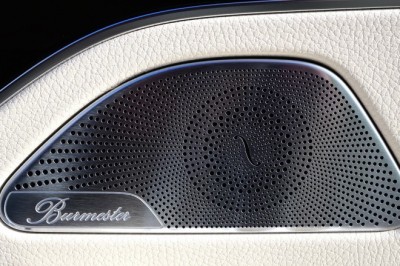How Do Guitar Amplifiers Work?
Guitar amplifiers amplify the sound fed into it from the guitar and drive the guitar loudspeaker. The sound waves generated by the guitar strings are converted into minute electrical signal with the help of the guitar pick up and then fed into the guitar amplifier (or simply guitar amp). Depending on whether or not the input of the guitar amp can work with the minute signal coming from the guitar, the guitarist may need to feed the guitar signal first into a pre-amplifier and then take the output from the pre-amplifier to feed the guitar amp.
The working of a guitar amp typically has four stages - input, signal modulation, signal amplification and then finally the output stage.
Input Stage
The input stage of the guitar amp accepts the input signal either from the guitar pre-amp or directly from the guitar itself. Normally, there are input female jacks installed onto the amplifier where you attach the input signal cable. If the guitar signal is too weak to be fed into the guitar amp, the signal should first pass through a guitar pre-amp. It is very important that there is proper impedance matching between the available input signal impedance and specified guitar amplifiers input signal impedance. More often than not, signal impedance mismatch is the cause of deterioration of the final guitar sound on the loudspeaker.
Nowadays, there are many guitar amps, which have a pre-amplification stage incorporated into them. For such amps, you do not need to pass the guitar signal into a separate pre-amp. You can directly feed the signal into the amp itself.
Signal Modulation Stage
Plain in and plain out is not exactly the way normal electric guitarist likes it. He wants the guitar sound to be jazzed up, twangy, funky, heavily distorted etc. etc. For such sounds, the input signal has to under go modulation before they can be amplified. Say suppose the guitarist wants a heavy distortion akin to heavy metal rock sound. To get this type of sound, the input signal is fed into the signal modulation stage where the signal undergoes the required (but controlled) distortion. The same applies to other sound effects like wah-wah sound, reverb etc. Many guitar amps have equalizers and other tone control knobs, which also come under the signal modulation stage.
Signal Amplification Stage
The signal amplification stage is the business stage of any guitar amp. It is here where the guitar sound is actually amplified. Good guitar amps will faithfully magnify the signal coming from the Signal Modulation Stage, i.e. the incoming signal will be the exact replica of this stages outgoing signal, only that it will be of much greater amplitude. It is the business of any amplifier (be it voice or guitar amp) to faithfully amplify the incoming signal.
Output Stage
This is the final stage of all guitar amps. Some guitar amps have the output driver stage as a part of the output stage, while some of them do not. In some cheap guitar amps, the outgoing signal from the signal amplification stage is directly fed into the loudspeaker. However, good guitar amps have proper signal conditioning output stage where it is ensured that output signal is properly matched to the input specifications of the loudspeaker.
Every good guitarist should have good knowledge about guitar amps. Getting a good guitar amp is very important if you wish to have a reliable and predictable output musical sound whilst playing your guitar.
For more information and reviews on guitars, guitar amplifiers and equipment visit GuitarHeadz.com, the complete guide for anything you want to know about guitars and related gear.































